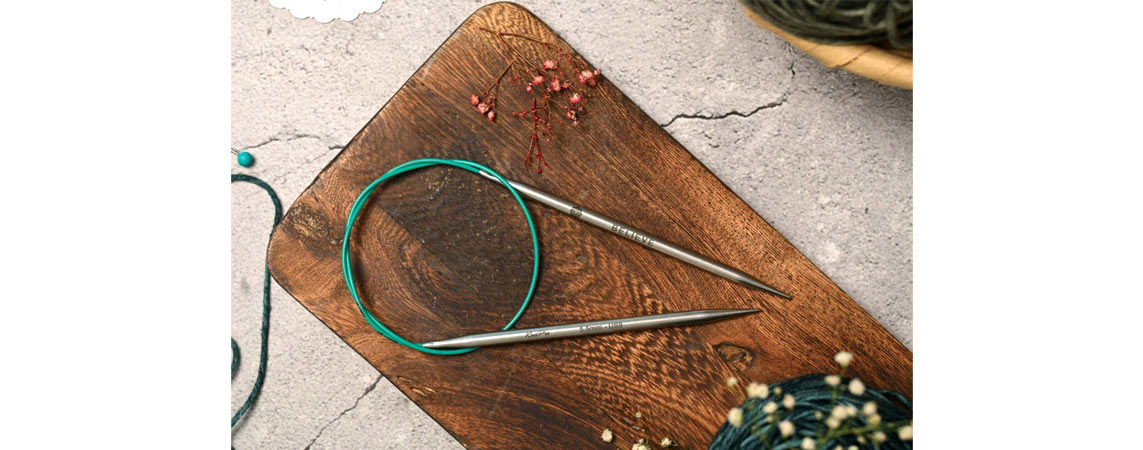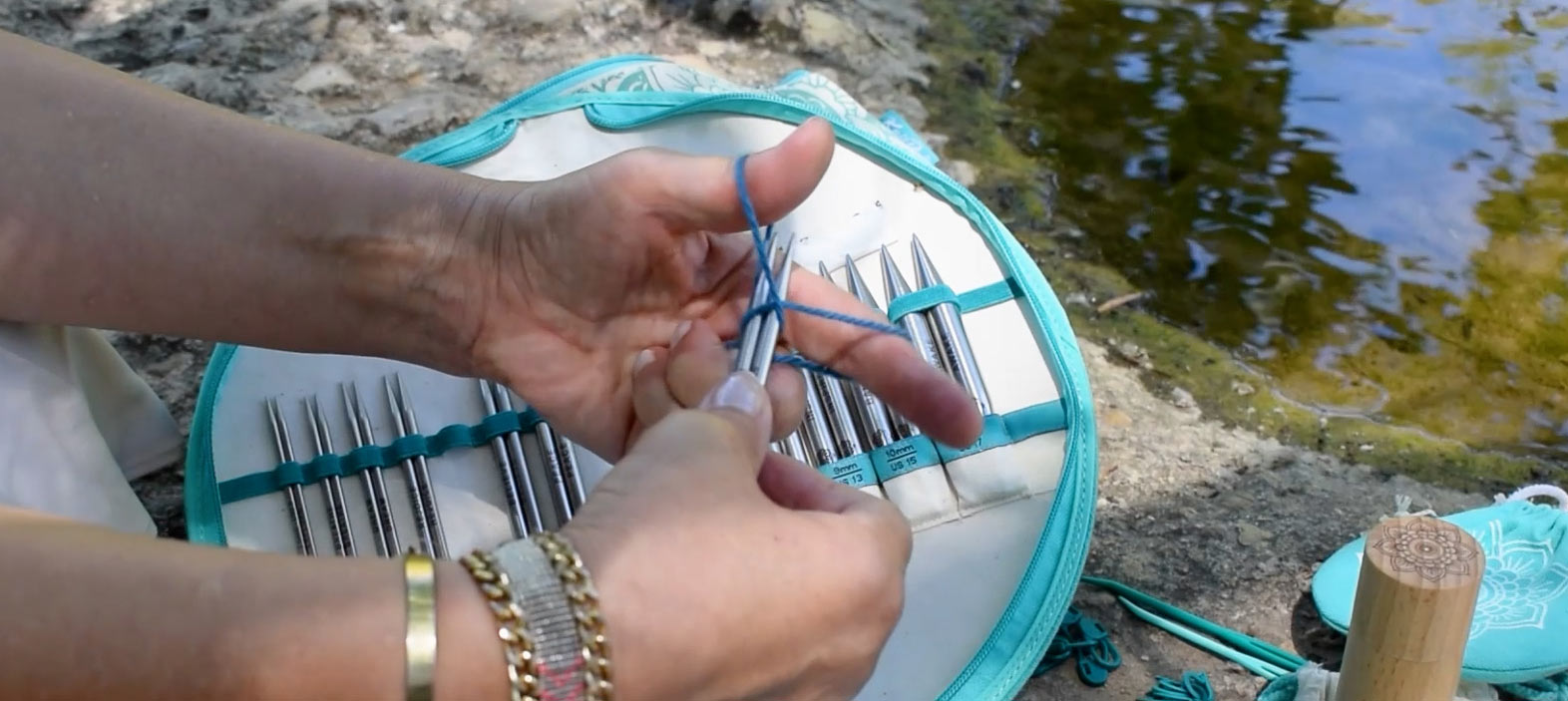Casting on stitches on your knitting needles is the first step of the project that lays the foundation for rest of your stitches. As the saying goes, “A good start makes the rest easier”. The cast on stitches needs to be perfect. You can cast on stitches working on single-pointed, double-pointed or even circular needles. The choice of knitting needles depends on the project and the comfort of the knitter to work with the needles. There is no right or wrong method, most patterns instruct how to go about it. We mostly start with the basic cast-on technique and it works for most projects, but it is always convenient to learn about other cast-on methods.
If your knitting pattern asks for a two-needle cast-on and only know how to do it with one, now is the time to expand your repertoire. In this blog post, we are going to discuss the process of cast on stitches on two knitting needles.
Why Cast on with two needles?
Many times a pattern will instruct you to cast on with two knitting needles. The purpose might be the design or Casting on stitches with two needles results in a much stretchier edge. This allows the technique an upper hand for lace projects, a 2×2 rib stitch, and similar patterns. The lace knit must be airy and open. Even if you do not need this open pattern in the rest of the stitches after the cast on, the stitches adjust when you begin knitting with a needle pair of straight or circular needles or a set of double-pointed needles.
It’s a bit more complicated to do than a basic cast-on, but it’s worth investing the extra time and effort. The two needles cast-on create a very neat and sturdy edge and are easy to knit across in the first row. Make sure to read the pattern carefully before gathering your supplies.
If you are in search of how to cast on knitting with two needles, let us guide you through the process with easy instructions.

Before that, let us quickly take a look at the list of things you need to have
- Knitting needles: You can choose any knitting needle, single-pointed, double-pointed, one circular or even two circulars as the pattern instructs. There are two methods where you can either choose the same size or different sizes for needles. In case you just want to experiment, use needles that are easy for you to work with. We recommend using sizes such as US 6 (4mm), US 7 (4.5mm), or US (5mm). These sizes allow you to clearly see the stitches as they are being made. For needle lengths, use according to the number of cast-on stitches you need.
- Yarn: Any yarn, any weight you are comfortable with.If you are following a pattern you will have the information. If not, go for yarns that allow you to see stitch formation. Try 4-ply DK yarn. Most yarn labels instruct the needle sizes that go with it.
Step by step guide to cast on stitches with two knitting needles (different sizes)
Method 1
Step 1 - Start with a standard slip knot around the bigger needle leaving a tail that is around 5 times as long as your work should be wide.
Step 2 - Make a slip knot, slide it onto the needle, tighten and hold this needle in your left hand.
Step 3 - Insert your right knitting needle through the front of the slip knot stitch. Ensure the small size needle is in front of the bigger size needle.
Step 4 - With the ball end of yarn behind the needles, wrap it around the tip of the right needle anti-clockwise.
Step 5 - With the tip of the small needle, carefully draw a loop by going down through the slip knot and out.
Step 6 - Bring the big size needle up and carefully transfer this new stitch to the knitting needle on your left hand and release the right needle.
Step 7 - Tighten your stitches. Repeat steps 2-5 until you have the desired cast-on stitches.
Method 2
You can also cast on stitches using same-size needles and hold them parallel to each other. Imagine that the two needles are one. Start with a slip knit on both needles. Cast on stitches as required.
If you have followed us through, you have successfully cast on your knitting with two needles. Now you can knit according to the pattern or as your project demands.
The smooth stainless steel material of the needles of the Mindful Collection is great to knit with. With perfectly tapered tips the needles of the range are ideal for lace knitting projects. And our tutorial will be of great help whenever you knit with stainless steel needle tips. Given the right knitting needles and accessories, you can take up any project. What is your preferred way to cast on?












